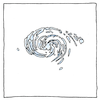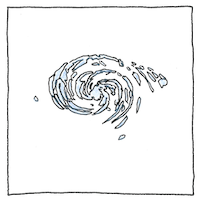William Parsons
astronomy

|
Spiral galaxies
William Parsons, third earl of Rosse, built his own telescope on the grounds of his castle with a seventy-two-inch speculum metal mirror to examine the nebulae those fuzzy objects in the night sky recorded by Ptolemy and later astronomers who didn’t understand what they were seeing. Rosse made meticulous drawings in pencil showing delicate spiral patterns but it took another 79 years for astronomers with even larger telescopes to distinguish giant stars in the spiral arms.
Leviathan of Parsonstown
From 1845 until 1917, Parsons’ was the largest telescope in the world. As ever, extreme wealth and much time can accomplish great things, and money can save time.
Nebulae
Given our finest instruments a doctor cannot sketch the difficulty of a body. The organs too remote, the parts too tiny, too hidden, too complex, too sensitive to measure, too complex for reason to fathom, too miraculous when it is well, too dreadful when it malfunctions. We make our own instruments made of hope and luck, made of listening, made of caring. If these means also fail, then it is difficult to imagine better but easy to suffer the lack.



Speculum, an alloy of copper and tin, was the same metal that William Herschel used for the 6.2-inch mirror for the telescope that he made and set up in his garden where he discovered Uranus in 1781.
The mirror for Herschel’s 40-foot telescope was 49.5-inches in diameter, but compared to Herschel’s 6.2-inch mirror, William Parsons’ 72-inch mirror could make visible astronomical features that were over a hundred times fainter. However, this was still not powerful enough to distinguish individual stars, even though Parsons believed the spiral nebulae were composed of stars and not gas.
We will always, it seems, struggle against our limitations to understand the intricacies of our universe, and of our own lives.
See also in The book of science:
Readings in wikipedia: